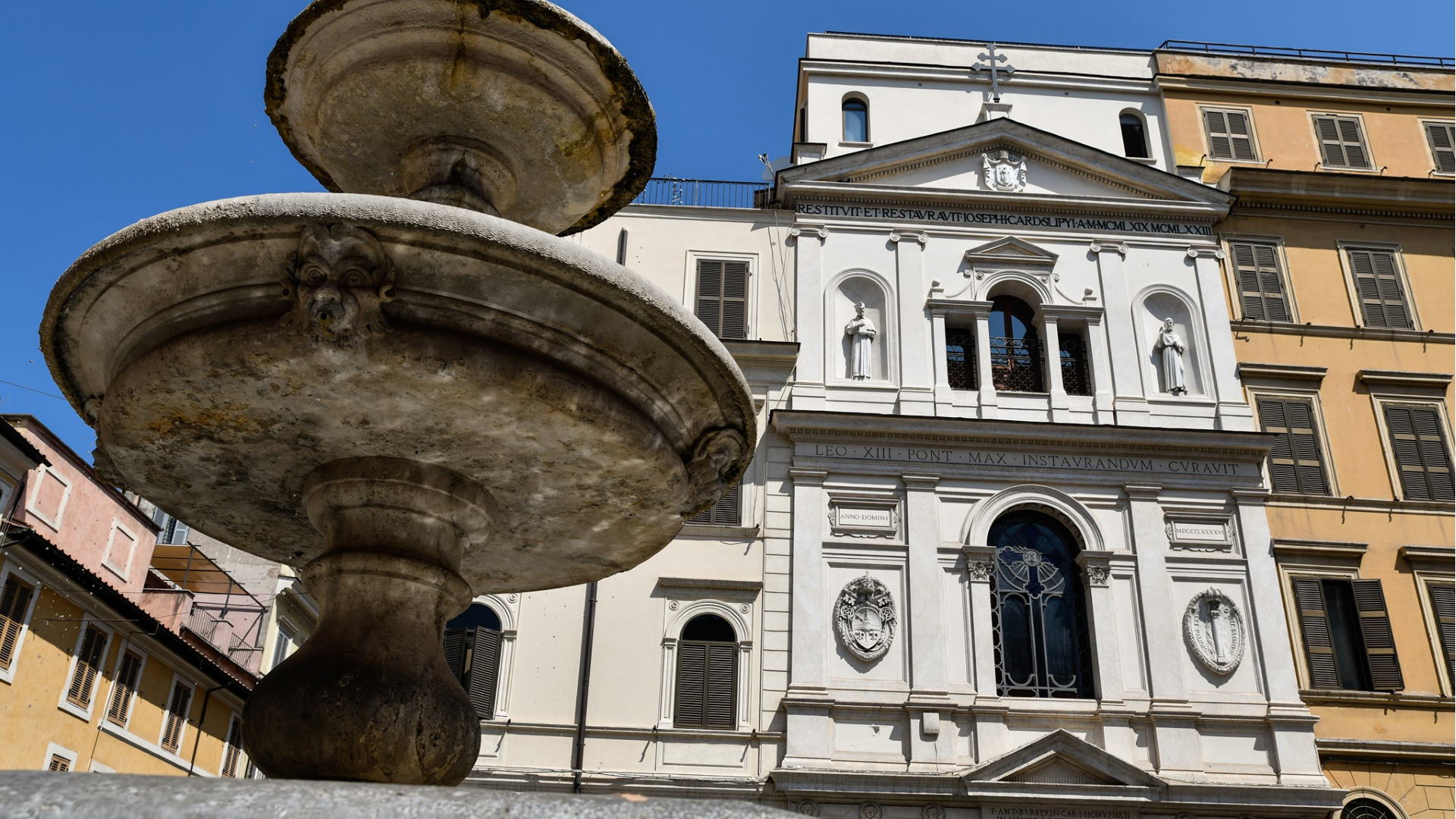
This small ancient Ukrainian Byzantine-rite church is to be found at Piazza Madonna dei Monti, among beautiful old and lived-in buildings, nightclubs and lively cafes. Sergius and Bacchus were two officers of the Roman army who suffered martyrdom under the emperor Maximian in the 4th century: their veneration spread rapidly throughout the Roman Empire, so much so that in the 9th century in Rome there were five churches dedicated to them. The first reference of the church dates back precisely to 9th century; it is then again remembered two centuries later in the bulls by Popes Gregory VI and Gregory VII as the monastery of Sancti Sergii in Suburra.
The church was rebuilt after the destruction wrought in the Sack of Rome in 1527; it was then again restored in the first half of the 17th century and the cost was mostly borne by Pope Urban VIII’s brother Cardinal Antonio Barberini, who is commemorated in an inscription over the entrance. The Pope then granted the complex to the so-called “Ruthenian Monks of St Basil” (worshipping in Byzantine rite and coming from the ecclesiastical province of Kiev) who still administer it today. In 1718, a fresco depicting Our Lady was found under plaster in the church’s sacristy: it demonstrated miraculous powers and was installed over the high altar, where it still is today. For this reason, the church was also familiarly known as the “Madonna del Pascolo”, Our Lady of the Pasture. As a result, in 1741 devotees donated enough money to finance the rebuilding of the church by Francesco Ferrari. Further changes were made to the church at the end of the 18th century and in 1896. From 1961, it is one of the three national churches of the Ukraine in Rome.
The present Neo-Classical façade was rebuilt in travertine limestone in 1896 and then restored in the 1970s; the doorway has a Baroque doorcase. The interior has a single nave with a barrel vault finely decorated with an 18th-century fresco by Sebastiano Ceccaroni. The 18th-century high altar, by Filippo Barigioni, has a pair of fluted Corinthian columns of verde antico marble and with gilded capitals. Here it is placed the icon of the Madonna del Pascolo, which is now protected by a gilded metal plate.
Information
For the timetable of the masses and visiting conditions, please consult the contacts.
 Condividi
Condividi
Location
To find out about all accessibility services, visit the Rome accessible section.











































